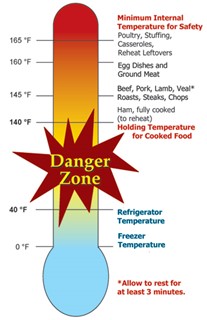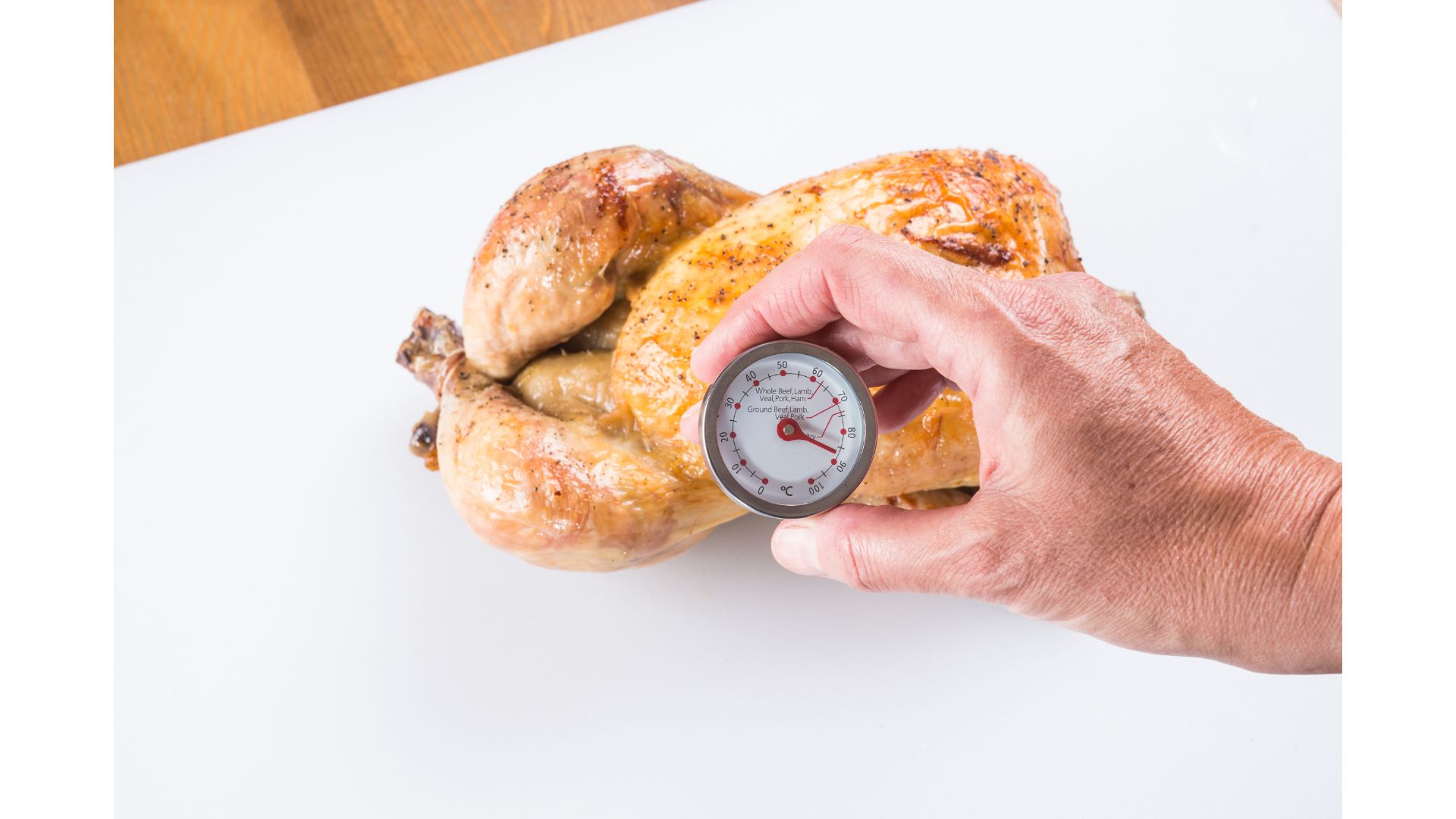Food Safety Starts With You
Enrique Ortiz
SNAP-Ed Nutrition Educator
With the holidays finally upon us and as we start to shop and cook family meals, I wanted to pass along important food safety tips we teach in our SNAP-Ed Nutrition Education Classes.
The first food safety recommendation is to always keep raw food and ready-to-eat food separate; both at the grocery store and in the kitchen. One of the biggest mistakes people make when shopping is loading up their shopping cart, and then place a package of raw chicken, turkey, or ham on top of everything. Raw meats contain bacteria that cause food poisoning. When placing the meat on top of the

cart juices can leak out and drip over the other food in your cart. The best way to prevent this is to place the meat product in a plastic bag and place it on the bottom section of the cart, this way it won’t come in contact with another food item. It is also important to clean and sanitize any surface that does touch the raw meat to eliminate the possibility of cross-contamination.
Another important fact is to make sure food is kept at a safe temperature. It’s crucial to keep food outside of the “danger zone.” Bacteria can multiply rapidly when kept in between temperatures of 40°F and 140°F (Danger Zone). When shopping it is important to keep this in mind and to get the refrigerated and frozen items last to avoid being in the danger zone for an extended period. Once back at home the refrigerated/frozen items should be put away immediately to get back to a safe temperature. After a meal is fully cooked and people have finished eating do not leave the leftovers on the kitchen table, either refrigerate or freeze any leftovers within 2 hours to avoid bacteria growth. Another note to keep in mind is to make sure the temperature in the refrigerator is set at or below 40°F and the freezer needs to be at or below 0°F. Doing this ensures food will be kept at a safe temperature when in the refrigerator and freezer.
A key detail to know is how to safely thaw a frozen turkey. There are multiple ways to safely thaw a turkey one is placing the turkey in the refrigerator multiple days prior based on the weight of the turkey. This is the recommended method to thaw a turkey as it allows it to thaw at a safe temperature. Another method submerging the turkey in chilly water; however, the water will need to be changed every 30 minutes. The last method is in the microwave, but the turkey will need to be cooked immediately after thawing it with this method. Avoid thawing foods on the counter, this is unsafe as it puts the turkey in the danger zone for multiple hours allowing bacteria to grow rapidly.

When cooking it is vital to make sure food is cooked to a safe internal temperature and not undercooked. The only way to guarantee food is a safe internal temperature is to use a food/meat thermometer. Cooking to these temperatures kills the harmful bacteria left on the food. The minimum recommended temperatures are:
145 F for any beef, pork, lamb, and steaks.
145 F for seafood.
160 F for any egg or ground meat dish.
165 F for turkey and other poultry.
For more information on how to prepare food safely during the holidays, feel free to check out the Holidays section of the K-State Research and Extension food safety website or K-State's publication, At-Home Safe Food Handling: It’s in Your Hands.
